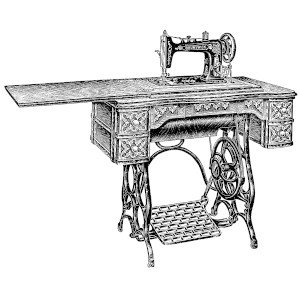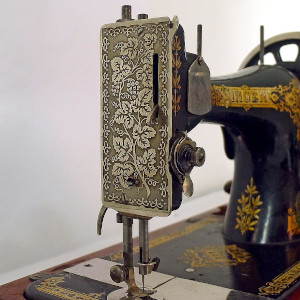 Whenever you start using a device or machine, you must know the actual mechanism involved that helps in its functioning. Similarly, one must also be aware of the evolution and innovations that took place over the years. Almost all machines that are available today use the operational techniques that date back to thousands of years ago. But, along with advancements in technology and creativity, they have become much easier to use in modern-day life.
Whenever you start using a device or machine, you must know the actual mechanism involved that helps in its functioning. Similarly, one must also be aware of the evolution and innovations that took place over the years. Almost all machines that are available today use the operational techniques that date back to thousands of years ago. But, along with advancements in technology and creativity, they have become much easier to use in modern-day life.
Likewise, it is the case for a sewing machine as well. For answering one of the frequently asked questions of who made the first sewing machine, it is necessary to know the background of sewing. Along with it, theoretically, every beginner in the department of sewing also should know the evolutionary trends that evolved over a certain period, which resulted in the present-day sewing machine.
Who Made The First Sewing Machine: Background
Sewing is one of the oldest crafts that has been in use since the Old Stone Age. Archaeologists believe that during this time, people were using clothing with skin and fur of animals. For keeping them together, needles were in the form of bones or ivory, and thread were veins and twigs from animals and plants. The present-day sewing machine came into form because of the art of hand sewing and embroidery.
For a long time, sewing was done by hand with spinning yarn and weaving fabric. But during the time of the industrial revolution, the invention of the sewing machine took place. The necessity for a sewing machine occurred due to the increased work pressure on hand weavers in the production of clothing. For saving time while producing more clothes, the mechanical tool came into light. Thus, in the 18th century, sewing machines took overhand sewing and decreased the extent of manual labor.
Invention Timeline
1755: During this year Germany based Charles Weisenthal designed a needle that was possible to use in a machine. He was also issued a patent on his name for his remarkable work. However, there is no mention of any machinery structure in the license. But his invention informs that there was a scope of the design of some mechanical form for sewing.
1790: The credits of the invention of the sewing machine go to Englishman, Thomas Saint. But since there was no proper channel of advertising or marketing, he did not get this recognition back then. The machine that he put together could only sew leather and canvas material. It was a hand machine. His device includes a swinging arm, a feed, a needle bar, and a looper and could also use a chain stitching pattern for simple stitches. The invention of Saint’s machine was useful in producing leather products and canvas. For example, saddles and ship sails, respectively. There was a scope of a lot of improvement that was possible in the coming years. However, when William Newton Wilson found his patent images in 1874, it proved that he also had planned a self-working machine. Wilson later built a duplicate model as per the pictures to ensure that Thomas Saint’s work got its recognition.
Earlier in the 19th Century: Since the invention of the machine by Saint, many other scientists, researchers also gave their contribution. There were many attempts and many failures as well. For every innovation, failure, and success complement each other. But each one of them is a learning experience for another.
 1804: Two Englishmen, Thomas Stone, and James Henderson built a similar sewing machine with slight differences. John Duncan from Scotland is known for constructing an embroidery machine.
1804: Two Englishmen, Thomas Stone, and James Henderson built a similar sewing machine with slight differences. John Duncan from Scotland is known for constructing an embroidery machine.
1810: With other developments, Balthasar Krems invents the machine that was able to function automatically for sewing caps. But he was unsuccessful in his attempt.
1807: Josef Madersperger was a tailor from Austria. He began developing another machine, and his first working machine was complete by 1814. He received financial support from the then government for his work.
1818: John Adams Doge and John Knowles develops the first sewing machine but did not work correctly.
1830: Barthelemy invents the machine that made sewing successful with a hooked needle and a single thread. It was successful in sewing with chain stitch. But he nearly lost his life when the French burned down his factory, producing uniforms for the army. According to French tailors, his invention was a model of unemployment.
1832: Walter Hunt’s machine resulted in a lockstitch patten of sewing. But after every feed, the device was reset, which made it difficult while sewing. It was also time-consuming. He did not bother to patent his invention, either.
1839: By receiving funding from the government, Josef Madersperger develops a machine that made weaving possible.
1841: Newton and Archibold introduce the pointed-eye needle and the pressing surface’s usefulness for combining two fabric pieces for staying in the same position.
1842: John Greenough patents his first sewing machine in the United States.
1844: In this year, finally, John Fisher innovates a machine that combines all the parts.
1851: A similar machine by Issac Merrit Singer and Elias Howe develops in 1851.
Who Made The First Sewing Machine: Final Thoughts
 The above timeline shows that the modern-day sewing machine has undergone many innovations, failures, and success. The invention of the sewing machine has hard work and hardships of many. Each and everyone involved has their contributions. Some records are available, and some are not. IM Singer was successful in developing the iconic Singer brand. The company’s first machine had a foot pedal and a needle that went up and down piercing through the fabric. For many years legal proceedings continued between Fisher and Singer for patenting as both of their machines had similar designs.
The above timeline shows that the modern-day sewing machine has undergone many innovations, failures, and success. The invention of the sewing machine has hard work and hardships of many. Each and everyone involved has their contributions. Some records are available, and some are not. IM Singer was successful in developing the iconic Singer brand. The company’s first machine had a foot pedal and a needle that went up and down piercing through the fabric. For many years legal proceedings continued between Fisher and Singer for patenting as both of their machines had similar designs.
Thus, whenever the question arises for who made the first sewing machine; the credit does not belong to one single person. All the past innovations contribute to the present-day device. Likewise, many changes are still formulating, where researchers are trying to develop user-friendly machines for every individual. With an increase in demand for sewing machines in every household, there is always a place for research and developments.



